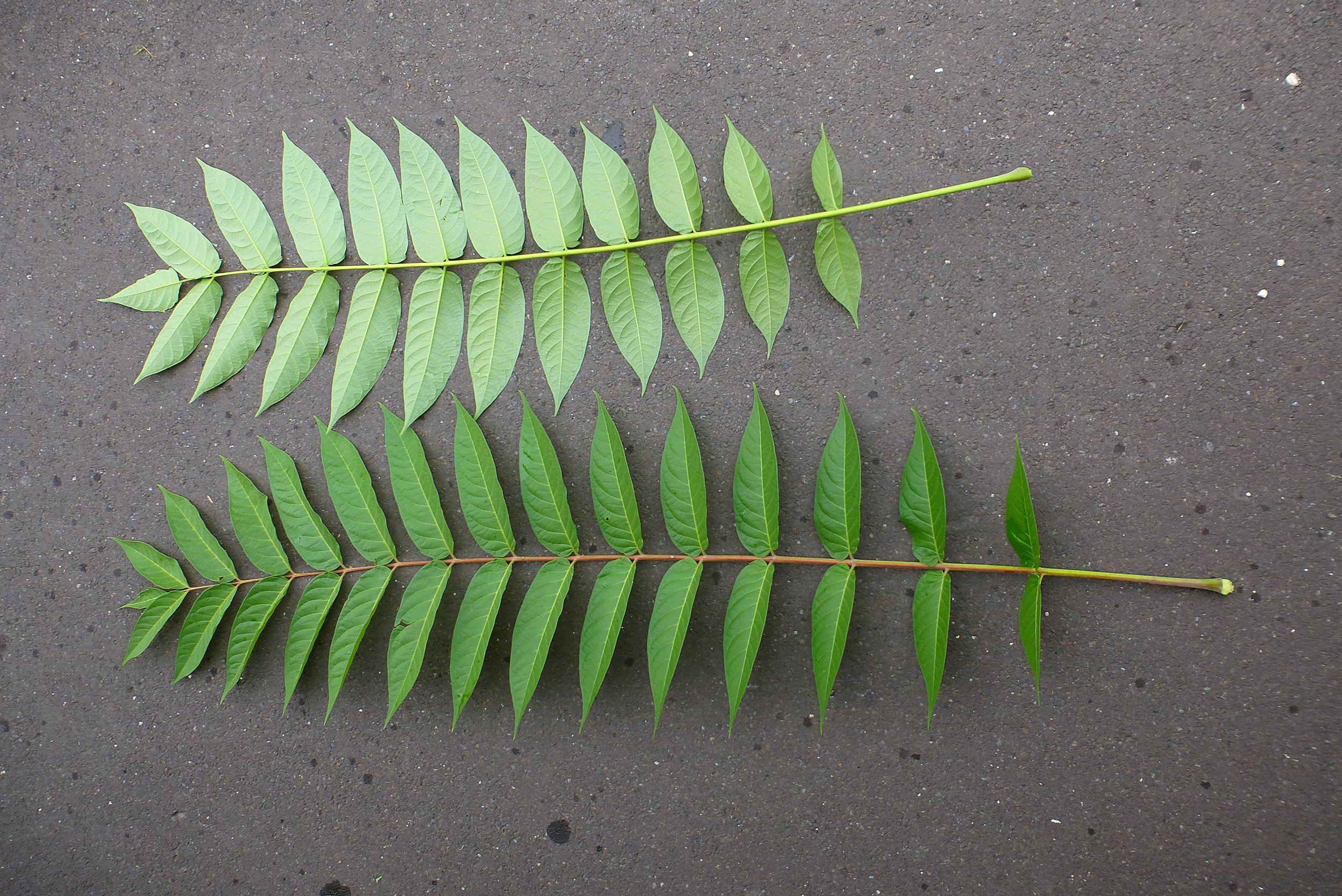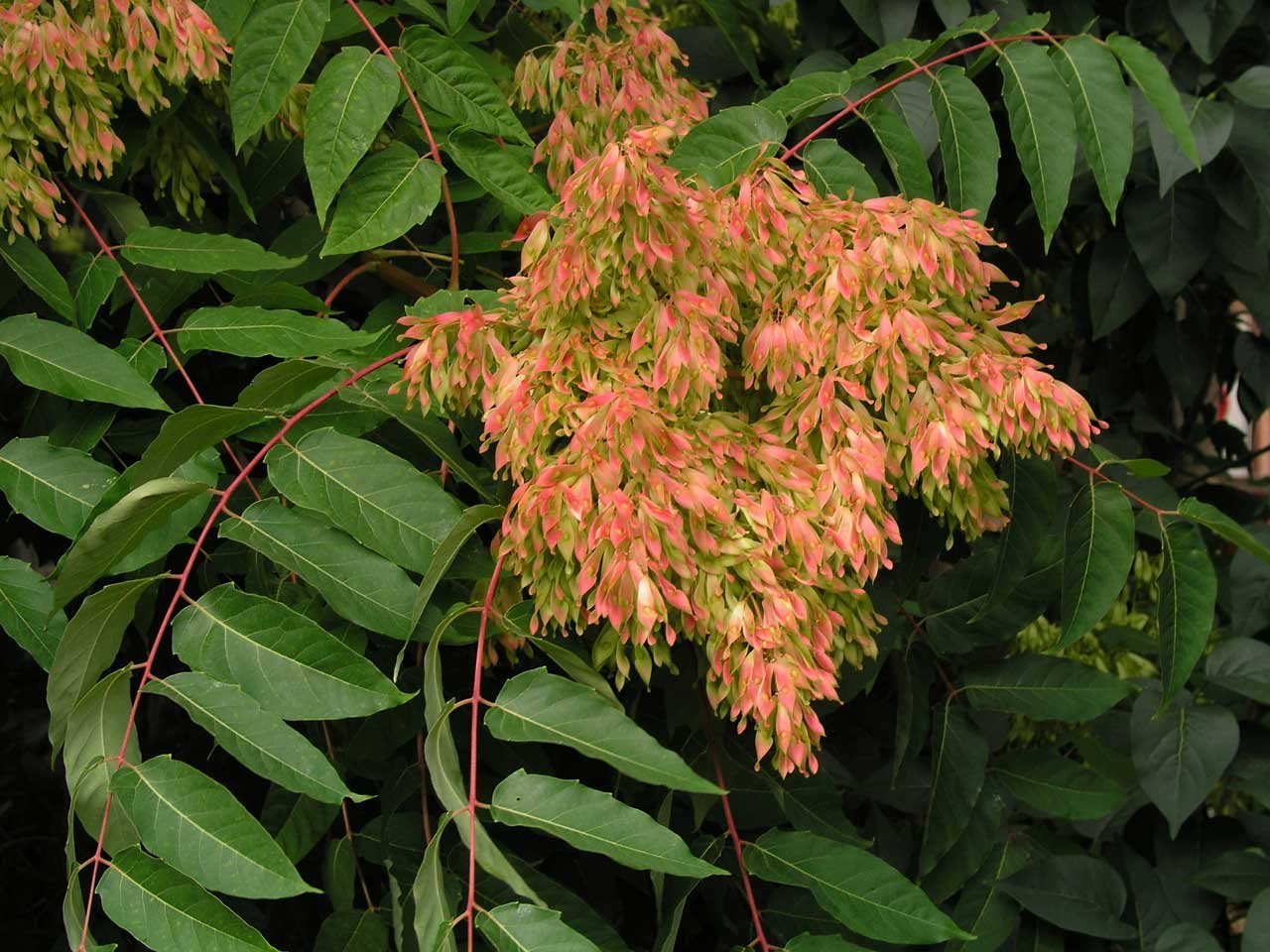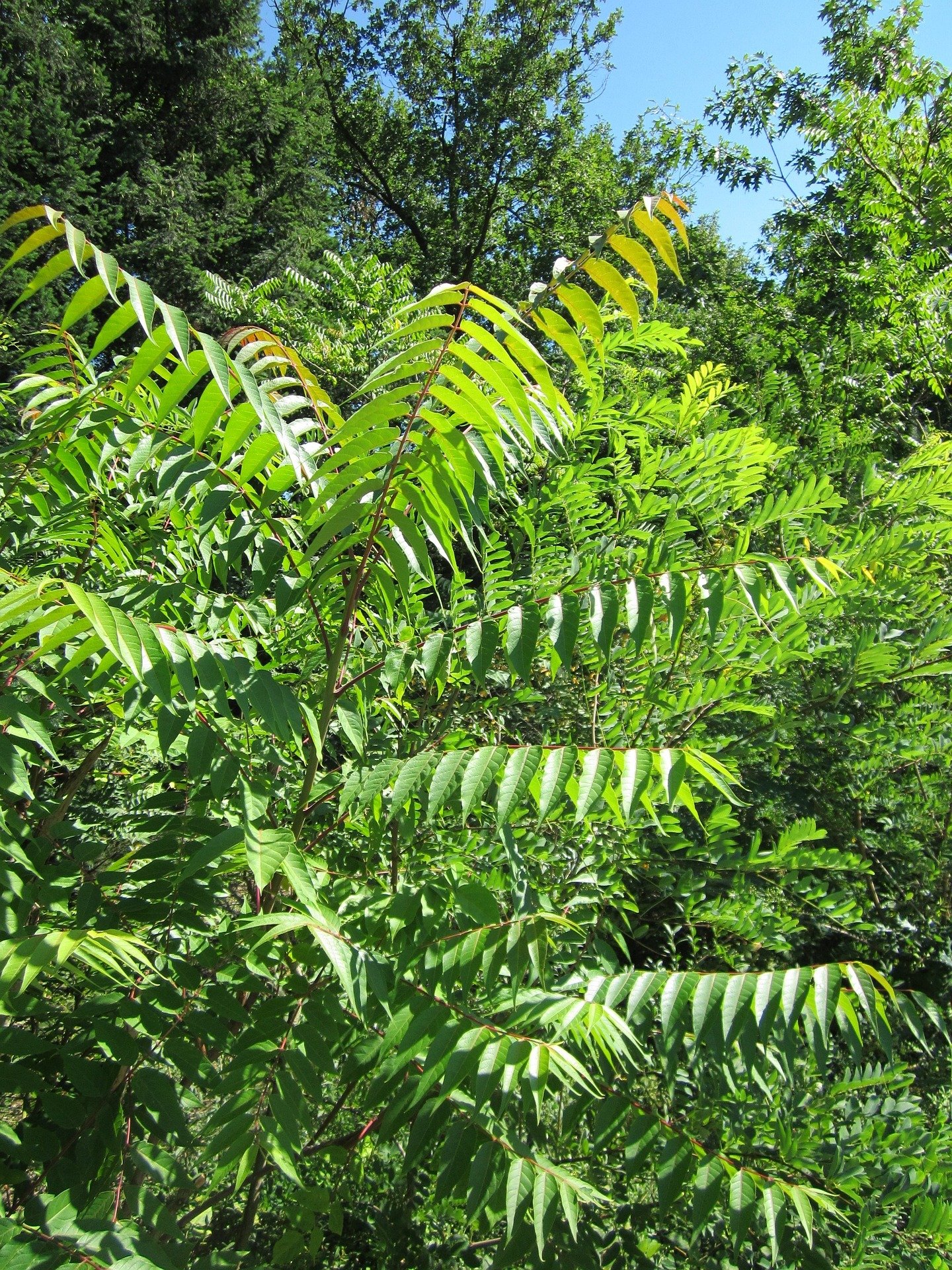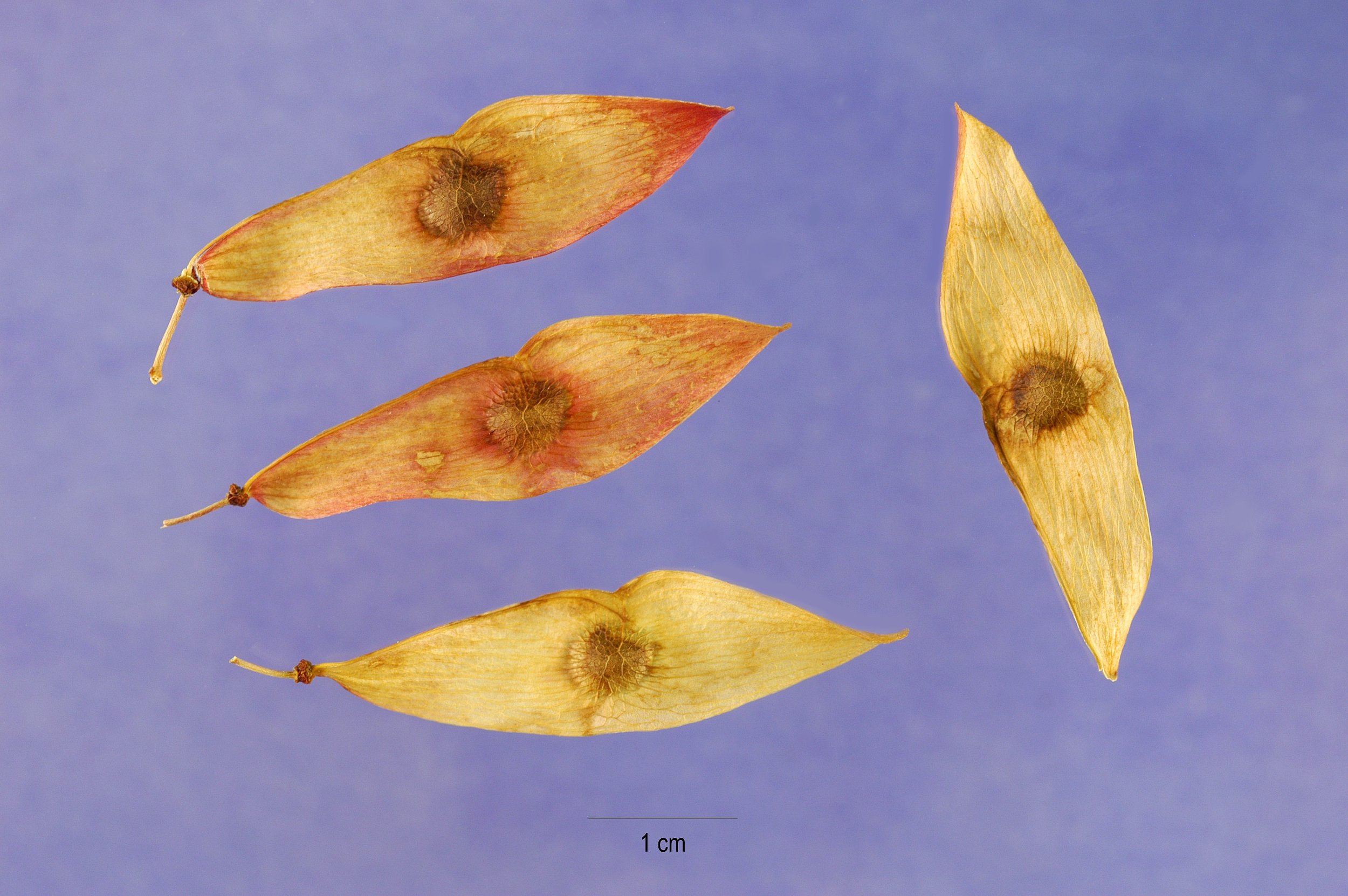Look out, Bradford Pear tree. There is a new contender for the title of Worst Invasive Tree in the US. It is Tree of Heaven, Ailanthus altissima. Tree of Heaven (TOH) was introduced by a Pennsylvania gardener in 1784 as an ornamental. Native to China, it has spread like mad and is now found in 42 of the lower 48 states. TOH tolerates any type of soil, any moisture level, and any soil acidity. It grows in sun or shade. It produces hundreds of thousands of seeds annually. Within three months of seed germination, the tree has put down a taproot that helps it survive drought. It grows fast, up to heights of 80 feet, although 30 feet is more common. TOH has escaped cultivation and is displacing native trees in both urban and rural locations, the definition of invasive. Its roots damage plumbing pipes AND it serves as a host plant for the damaging spotted lanternfly. For additional information from NC State University, click HERE.
TOH leaves resemble sumac or black walnut leaves, with 10-40 leaflets arranged along a central stem that may reach up to four feet. Like black walnut (Juglans nigra), TOH exudes toxins that stunt surrounding plants that compete for moisture and nutrients. When crushed, the leaves smell bad. TOH flowers in middle to late summer, usually July to August. Flowers produce seeds in papery envelopes called samaras. Think of a maple tree’s helicopter seeds that have been pinched in the middle and you have a pretty accurate picture of what TOH seeds look like.
Not only does TOH spread with a vengeance, it is extremely difficult to control. It spreads by seeds and by root suckering — Little Shop of Horrors, indeed. Note: If you are opposed to herbicide use, stop reading now. Research is ongoing for biologic controls. If you merely cut down a tree without applying herbicide to the fresh cut, babies emerge from all the surrounding roots as well as from the trunk. If you try to remove a tree with machinery, any tiny portion of root left behind will spring into life as a new tree.
There are several recommendations for control. These methods include applications of herbicides glyphosate or triclopyr, and a satisfying-sounding method known as “hack-and-squirt.” Click HERE for detained instructions from the NC Forest Service. Remember to follow application instructions exactly. “The label is the law.”
Be aware of what is growing in and around your property. Any unwelcome invader is easiest removed when young. Eliminating the preferred food source will help control invasive spotted lanternfly. TOH control might save your plumbing, your driveway, and your surrounding woodlands. A widespread effort can prevent Tree Of Heaven from becoming the next kudzu or Bradford Pear.




